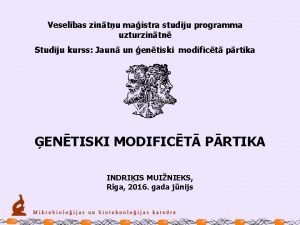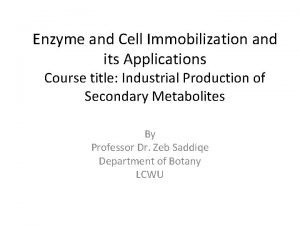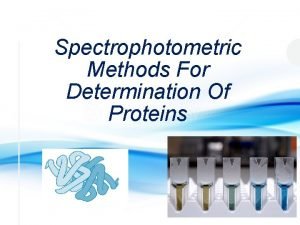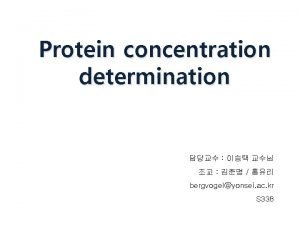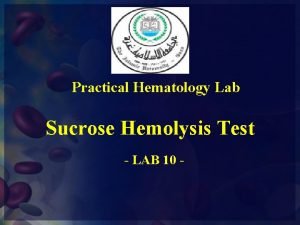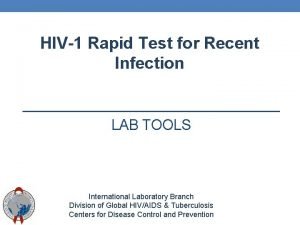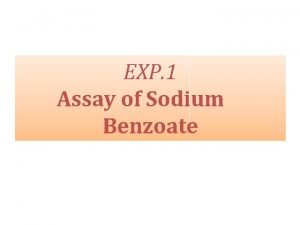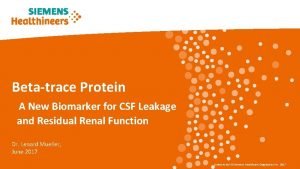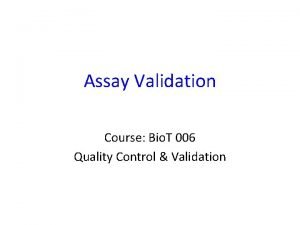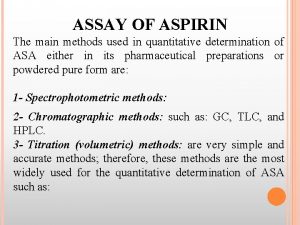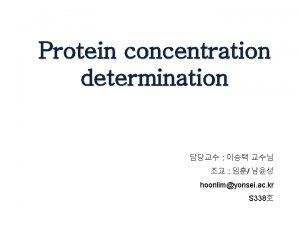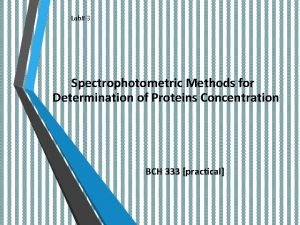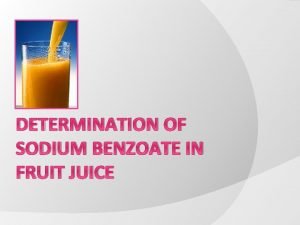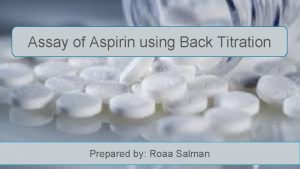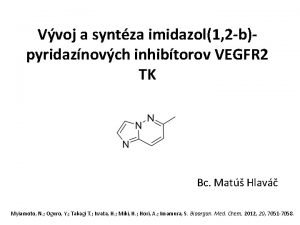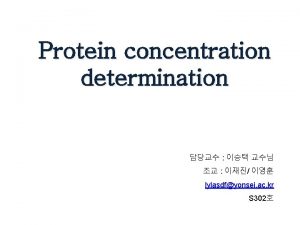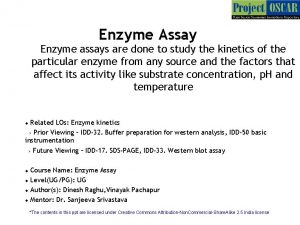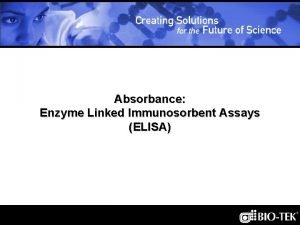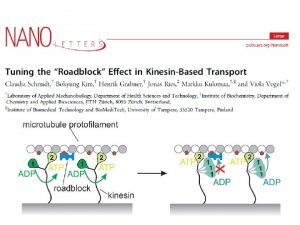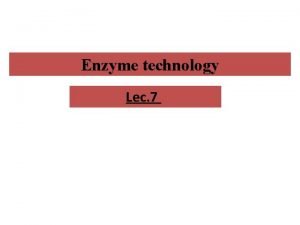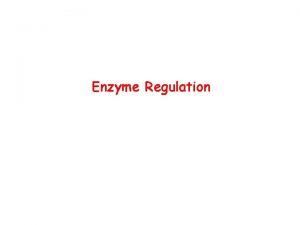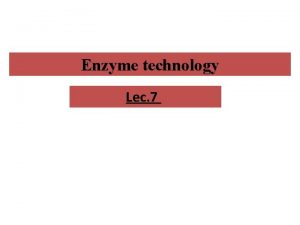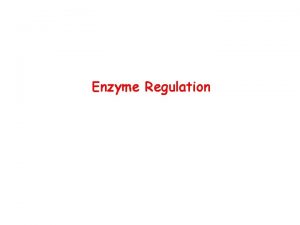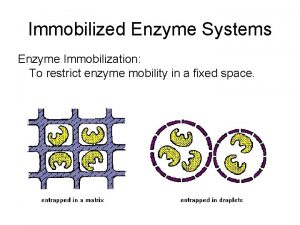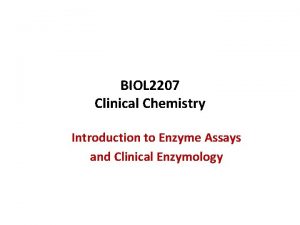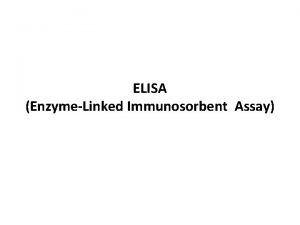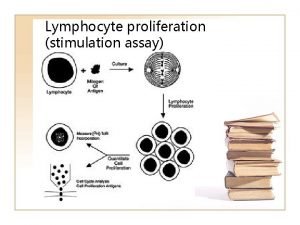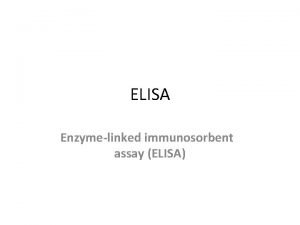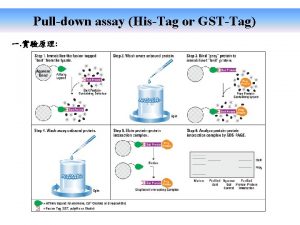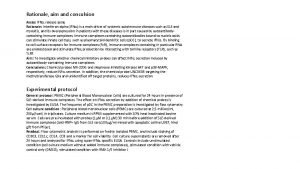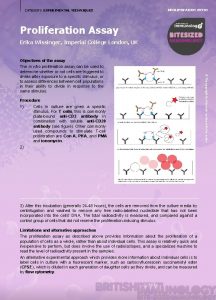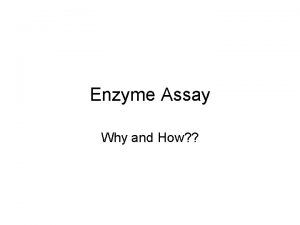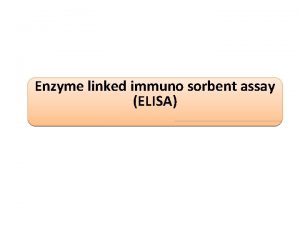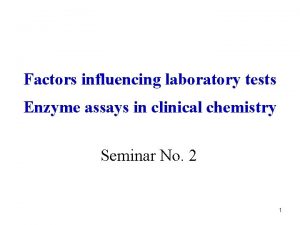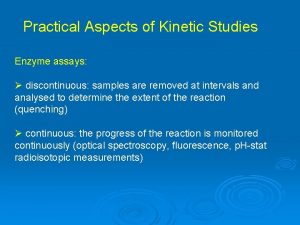Methods of Enzyme Assay Introduction All enzyme assays























- Slides: 23

Methods of Enzyme Assay

Introduction: • All enzyme assays measure either the consumption of substrate or production of product over time. • Different enzymes require different estimation methods dependingon the type of reation catalysed, the nature of S and P or coenzyme. Methods of quantitatively following enzyme reaction: 1 -Spectrophotometric methods. 2 -Fluorescence methods: using a fluorometer. E. g. NAD+ and NADP+ do not fluoresencein their oxidized forms, but the reduced form have a blue fluorescence reduction reaction. 3 - Sampling methods : by withdrawing samples at intervals and estimating the substrate or product by chemical methods. It is for inorganic phosphate. It can be used for phosphatase, phosphorylase, nucleotides and all enzymes involving ATP or ADP including some kinaseand synthetase.

4 - Manometric methods: Use manometer , suitable and accurate methods for following reactions in which one of the component is a gas. e. g. Oxidases(O 2 uptake), Decarboxylase(CO 2 output) 5 - Eletrode Methods: reactions which involve the production of acids. In this method p. H meter is used to measure change in H+ conc. During enzyme reactions. (i. e. measure change in p. H as the reaction proceeds). 6 - Polarimetric Method: use polarimeter. For isomerases that convert one isomer to another. D-glucose L-glucose

When the Spectrophotometric methods can be used? 1) Cases in which product absorbs but not the substrate. e. g. Fumarate hydratase. (catalyze the addition of groups to double bonds) Fumarate Malate 2) The Co-enzyme NAD/ NADP have an absorption band at 340 nm in the reduced state NAD (nicotainamide adenine dinuclotide ) NADH NADP (nicotainamide adenine dinuclotide- p ) NADPH Oxidized form Reduced form


Enzyme assays can be: - Continuous assay , where the assay gives a continuous reading of activity. - Discontinuous assay, where the samples are taken, the reaction stopped then the concentration of substrates/products determined.

Alanine transaminase An enzyme that catalyzes a type of reaction between an amino acid and α-keto acid. Specifically, this reaction (transamination) involves removing the amino group from the amino acid, leaving behind an α-keto acid, and transferring it to the reactant α-keto acid and converting it into an amino acid.


The enzymes are important in the production of various amino acids, and measuring the concentration of various transaminases in the blood is important in the diagnosing and tracking many diseases. Alanine transaminase or ALT is a transaminase enzyme. It is also called: Serum glutamic pyruvic transaminase (SGPT) or Alanine aminotransferase (ALAT). ALT is found in serum (at low level) but is most commonly associated with the liver.

ALT found mainly in liver cells: thus , an elevated level ALT is a sensitive index of acute hepatocellular injury. Elevated serum ALT(SGPT) level are found in hepatitis, cirrhosis , and obstructive jaundice. Levels of ALT (SGPT) are only slightly elevated in patient following a myocardial infraction.

Objectives: Study the Continuous Assay method by determining the enzymes activity for : 1. Alanine transaminase 2. Lactate dehydrogenase

1 -Alanine Transaminase Assay Principle: It catalyzes the transfer of an amino group from alanine to α-ketoglutarate, to form pyruvate and glutamate under controlled condition (37°C) and p. H 7. 4 ± 0. 05 Alanine + α- ketoglutarate → Pyruvate + glutamate The pyruvate formed in the reaction is reduced to LLactate by Lactate dehydrogenase (LDH) with the Oxidation NADH. Measure the absorbance of NADH/NAD+ at 340 nm Pyruvate + NADH+H+ → L-Lactate+ NAD+ +H 2 O

Material A- Chemicals ALT (SGPT) reagent: • 100 mmol/L Tris ( PH =7. 5 , 0. 05) • 350 mmol/L L-alnine • 15 mmol/L 2 -Oxoglutarate with preservative • 0. 25 mmol/L NADH • ≥ 5000 U/L LDH with filler and stabilizer Serum Sample B- Instruments: • Quartz cuvette( invisible region) • Spectrophotometer (340 nm) • Stop watch

1 -Alanine Transaminase Assay ALT Method: 1 - Alanine + 2 -Oxoglutarate → Pyruvate + L- glutamate LDH 2 -Pyruvate + NADH+H+ → L-Lactate+ NAD+ +H 2 O T 1 Pipette 3 ml of the ALT reagent Pre-warm the tubes at 37 for 3 min Pipette 0. 2 ml /200µl of serum sample Mix , and allow 60 seconds for temperature equilibration Read the absorbance at 340 nm every minute for 3 minute /use(H 2 O) as blank

Results: Test Tube T 1 Absorbance at 340 nm A 1 ΔA/min ((A 1 -A 2)+(A 2 -A 3))/3 A 2 A 3 ALT Activity ( U/L) = ΔA/min x 1768 ALT Activity (U/L) = U/L NORMAL RANG OF ALT: up to 32 U/L female Unit definition : ΔA/min = measured the rate of change in absorbance per min (U/L) = the amount of enzyme that will reduce one micromole of NADH per min per liter of sample at specific temperature.

2 -Lactate Dehydrogenase Assay Use the co-enzyme in measure the activity of Lactate dehydrogenase: An enzyme that catalyzes the conversion of lactate to pyruvate. (LDH) This is an important step in energy production in cells. Many different types of cells in the body contain this enzyme. Some of the organs relatively rich in LDH are the heart, kidney, liver, and muscle. It is responsible for converting muscle lactic acid into pyruvic acid, an essential step in producing cellular energy.

Lactic acid dehydrogenase (LDH) is present in almost all of the tissues in the body and becomes elevated in response to cell damage. LDH levels are measured from a sample of blood taken from a vein. Generally, the upper limit of normal for adults is in the range of 200 units/liter. Elevated level of LDH in serum are found in myocardial infraction, liver diseases, renal diseases, certain forms of anemia, malignant diseases and progressive muscle dystrophy.

Low LDH can be seen in malnutrition, hypoglycemia, adrenal exhaustion, or low tissue or organ activity.

2 -Lactate Dehydrogenase Assay Principle: LDH catalysis the following reaction: LDH L-Lactate + NAD+ Pyruvate +NADH + H+ The rate of NADH formation is indicated by increase the absorbance at 340 nm and it is directly proportional to serum LDH activity. If: NADH is product : increase the absorbance /min NADH is reactant: decrease the absorbance /min

Material: A- Chemicals LDH reagent: • 80 mmol /L Buffer ( PH =8. 6 , 0. 05) • 70 mmol /L Lithium L-Lactate • 5. 5 m. M NAD+ • Non reactive stabilizer with preservative. Serum Sample. B- Instruments: • Quartz cuvette ( invisible region) • Spectrophotometer (340 nm) • Stop watch

2 -Lactate Dehydrogenase Assay Method: LDH L-Lactate+ NAD+ → Pyruvate + NADH+H+ T 1 Pipette 3 ml of the LDH reagent Pre-warm the tubes at 37 for 3 min Pipette 0. 4 ml/400µl of serum sample Mix , and allow 60 seconds for temperature equilibration Read the absorbance at 340 nm every minute for 3 minute /use(H 2 O) as blank

Results: Test Tube T 1 Absorbance A 1 A 2 A 3 LDH Activity ( U/L) = ΔA/min x 4984 LDH Activity (U/L) = U/L NORMAL RANG OF LDH ( 103 - 277) U/L ΔA/min ((A 3 -A 2)+(A 2 -A 1))/3

Thank You
 Enzyme-linked immunosorbent assay (elisa)
Enzyme-linked immunosorbent assay (elisa) Enzyme-linked immunosorbent assay (elisa)
Enzyme-linked immunosorbent assay (elisa) Enzyme-linked immunosorbent assay (elisa)
Enzyme-linked immunosorbent assay (elisa) Immobilization techniques
Immobilization techniques Name a point that is collinear with the given points
Name a point that is collinear with the given points Wax pattern in dentistry
Wax pattern in dentistry Bradford assay 원리
Bradford assay 원리 Quanshun zhang
Quanshun zhang Bca assay 원리
Bca assay 원리 Sucrose lysis test
Sucrose lysis test Asante hiv-1 rapid recency assay
Asante hiv-1 rapid recency assay Fluted filter paper vs cone
Fluted filter paper vs cone Sodium benzoate assay
Sodium benzoate assay Assay technology inc
Assay technology inc Betatrace
Betatrace Quality control assay
Quality control assay Principle of assay of aspirin
Principle of assay of aspirin Virochip
Virochip Bradford assay standard curve
Bradford assay standard curve Bradford assay 원리
Bradford assay 원리 Determination of sodium benzoate in fruit juice
Determination of sodium benzoate in fruit juice Titration of aspirin
Titration of aspirin Amplified luminescent proximity homogeneous assay
Amplified luminescent proximity homogeneous assay Bradford assay standard curve
Bradford assay standard curve
